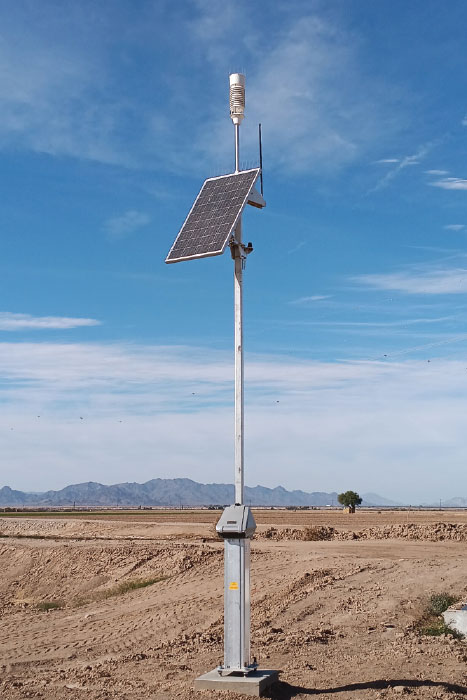
There are sizeable opportunities for water savings in the gravity-fed water delivery networks via irrigation districts and gravity-fed surface irrigation on farms within the United States. The dominant water saving opportunities are with the manually operated reticulation networks (e.g., canals), referred to as gravity-fed water delivery networks, and on-farm using manually operated flood irrigation application methods.
It is estimated that only half the storage-based water released from reservoirs and supplied by gravity-fed water delivery networks and flood irrigation methods on-farm are finally used for crop consumptive use. It is contended that the excess water is being lost because of antiquated and restrictive operating practices that, in large part, force inefficiencies at the farm level.

The water savings opportunity is the water which is not used by the crop or for crop production practices. For many reasons, it is best this water remains in the upstream reservoir and be strategically allocated and managed, rather than allowing ad-hoc access to it by downstream users. The water savings can be realized via a modernized and automated on-demand supply (i.e., water orders of flexible duration, flexible timing and variable flow) and the subsequent enabling of efficient on-farm application methods (e.g., micro, sprinkler and advanced surface irrigation).
Accurate metering and flow control at the delivery turnouts are an important element of:
Advanced water technologies are now available for irrigation district managers of gravity-fed irrigation networks that enable them to operate and manage their water resources to unprecedented levels of efficiency and control. Irrigation authorities can now deliver accurately measured, constant high-flow, on-demand water to farmers utilizing existing open channel systems with limited outfalls at the end of canals.
With this level of service, farmers are better positioned to make irrigation management decisions, receiving the water their plants need, when they need it and at the rate they need it, avoiding wastage and fertilizer runoff. The water savings can be realized via a modernized and automated surface irrigation system to irrigate field crops (alfalfa, fodder, corn, cotton) to improve the productivity of the world’s farmers in an environmentally sustainable way.
High-flow surface irrigation together with automation and accurate and precise timing provide what can be termed “advanced surface irrigation.” In evaluation studies conducted by the Cooperative Research Centre for Irrigation Futures in Australia, higher irrigation flows have been shown to offer improved application efficiencies, well above those achieved across the irrigation district where the study was conducted (Goulburn Murray Water, Victoria Australia). On all but the lightest soils, efficiencies in excess of 85% are achievable, reaching as high as 95% on some soils.

Similar results have been observed in California with the University of California Division of Agriculture and Natural Resources at its Desert Research and Extension Center, located in Holtville, California. The research demonstrated that gains in application efficiencies are possible using optimally managed, automated, high-flow check irrigation in California for alfalfa and furrow irrigation in Holtville for sugar beet production.
A secondary objective demonstrated and evaluated the techniques for calculating in real time the time to cutoff for each irrigation. The techniques used data captured during that irrigation, in sufficient time to provide optimum control of that irrigation.
On-farm advanced surface irrigation uses automation, sensor technology, science and data analytics, real-time optimization and irrigation scheduling methods to reduce water applied and increase yields. By upgrading inefficient manually operated flood irrigation, application efficiency improves from 50%-60% to 85%-90%. Advanced surface irrigation increases water efficiency in crop production by at least 20%-30%, through the combination of the following two improvements:
University and academic research have demonstrated that it is feasible to transform inefficient manually operated flood irrigation systems having 50%-60% application efficiency to achieve high-performance surface irrigation with 80%-95% application efficiency. In many cases yield was also increased, significantly improving the ratio of productivity/volume of water applied, in some cases producing double the dry matter per acre-foot of applied water.

The border check bay width ratio to flow rate is an important design criteria element. This requires the replacement of several low-flow discharge outlets with a single high-flow outlet per border check, thus increasing the discharge rate and reducing the time to cutoff, which is proven to significantly increase distribution uniformity and application efficiency. The U.S. Department of Agriculture’s Agricultural Research Service WinSRFR software is used as a hydraulic analysis tool for developing the design criteria for surface irrigation systems. With improvements in application efficiency with surface irrigation, the applied water (using higher flow rates) ends up in the root zone, evenly distributed along the bay, resulting in losses by deep percolation and runoff being small, thus increasing water efficiency in crop production, which is not possible with low-flow, manually operated, flood irrigation systems.
With improvements in real-time optimization of the surface irrigation system, applied volume to the bay is precisely controlled by a canal flow meter and continuously measured. Irrigation evaluation data combined with flow depth measurements during an irrigation event pre-calculates time to cutoff early within the wetting advance (25% to 50% along the bay) and automatically adapts the irrigation program to increase or decrease time of the bay gate opening to significantly reduce runoff and deep percolation, resulting in higher water efficiency gains.
A recent advanced surface irrigation project commissioned in Blythe, California, as part of the California Department of Food and Agriculture’s State Water Efficiency and Enhancement Program using the Southern Desert Region Pilot Program, has achieved 24% to 30% reduction in applied water compared to the last four years.
8280 Willow Oaks Corporate Drive | Suite 630 | Fairfax, VA 22031
Tel: 703.536.7080 | Fax: 703.536.7019
HOME | ABOUT US | ADVERTISE | SUBSCRIBE | CONTACT | PRIVACY POLICY | IA ANTITRUST STATEMENT